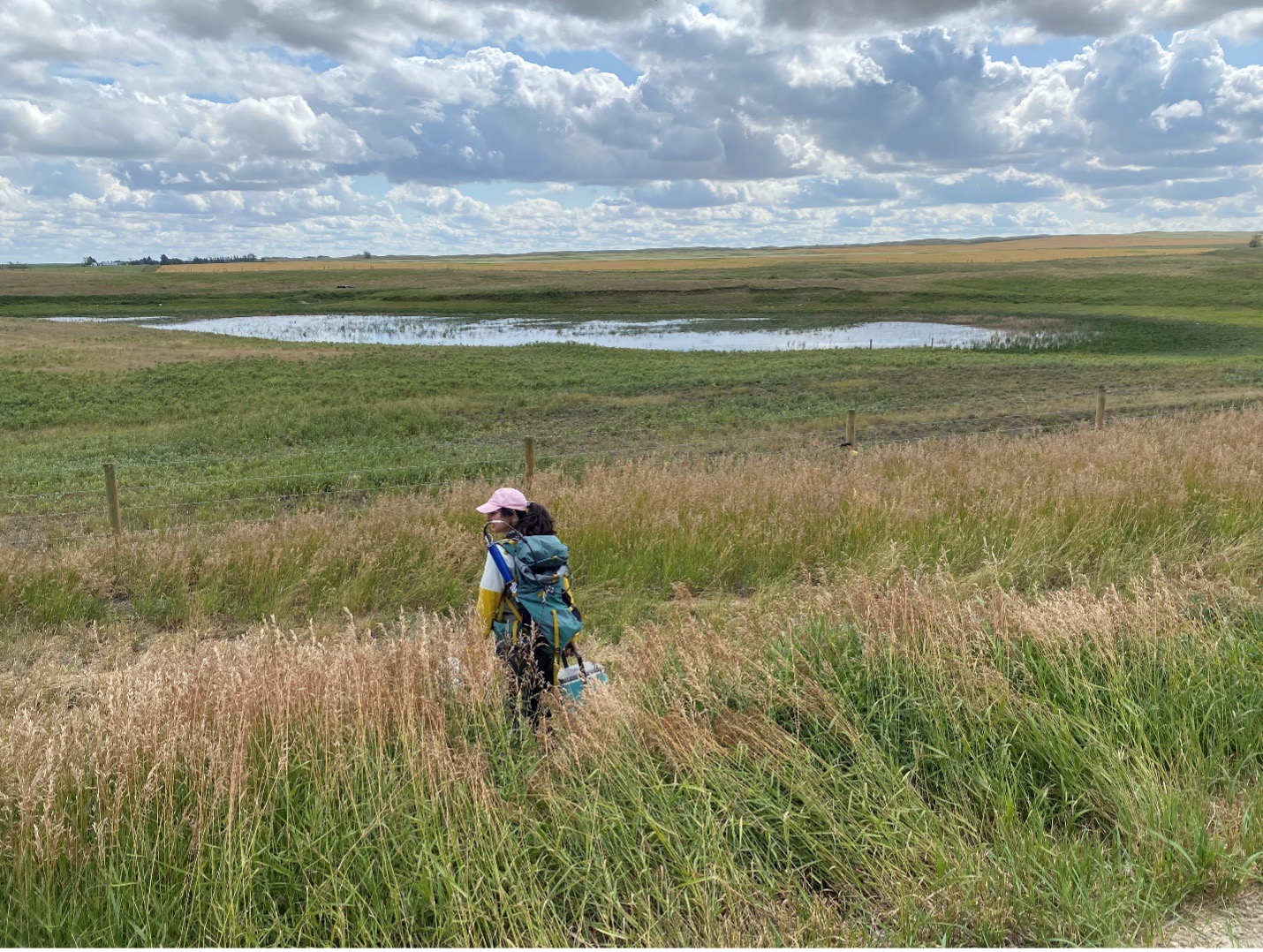Inland waters including ponds and wetlands are one of the largest natural sources of methane. Pound for pound, methane is a far more potent greenhouse gas than carbon dioxide. Now, a University of Lethbridge-led study has found that many of the ponds and wetlands dotting the Canadian Prairies emit less methane than predicted in part due to their elevated salt content, making previous estimates highly inaccurate.

“We came up with new prairie-specific models and estimates that were much lower than expected based on models developed in other parts of the world,” says Dr. Matthew Bogard, a ULethbridge biology professor and Canada Research Chair in Aquatic Environments. “We were very conservative in our calculations and even so, we found that emissions were drastically overestimated.
Their study was recently published in Nature Communications.
Bogard and Dr. Cynthia Soued, a ULethbridge post-doctoral fellow at the time of the study, partnered with scientists from Ducks Unlimited Canada and the universities of Regina, British Columbia and McGill. Their goal was to develop an understanding of methane emissions from inland aquatic systems in the Prairie Pothole Region.
“There is growing interest in understanding the role of prairie ecosystems in carbon accounting, both provincially and nationally,” says Bogard. “Decades of research have improved our estimates of greenhouse gas emissions from inland waters. However, our knowledge of methane emissions from saltier ecosystems in the Prairies lags behind other regions. This study provides a step toward better carbon accounting.”

The researchers assembled new and existing data from nearly 250 aquatic ecosystems across the Canadian Prairies. They used advanced sensors to monitor real-time emissions at two wetlands and assembled data from other regions of the world where salty systems exist.
Why is this important?
The findings from this study become important for Canada and other regions when decisions are being made about draining or preserving wetlands and ponds.
“We need accurate estimates of greenhouse gas emissions from these systems to know exactly what we gain or lose with different management decisions,” says Bogard.
“Wetland drainage on agricultural land is a hotly contested topic in the prairie provinces these days,” says Dr. Kerri Finlay, a professor at the University of Regina and lead co-author of the publication. “Our research now shows that intact wetlands and ponds in this region are much lower emitters of methane than previously assumed. Draining wetlands will instead create large pulses of greenhouse gas emissions, far beyond anything we see if a wetland is preserved.”
Methane emissions are only one component of the carbon cycle in these ecosystems. Plants also suck up carbon dioxide from the atmosphere to build biomass and lock away vast amounts of carbon in the mud at the bottom of these ecosystems. Bogard says years of work are still needed to understand the full balance of carbon cycling in prairie ponds and wetlands, but in the meantime, we cannot overlook their benefits.
“These systems provide many different ecosystem services to us for free that are worth over $20 billion a year in Canada alone,” Bogard says. “They store water, so they buffer floods and droughts. They provide cooling as water evaporates into the atmosphere. They are refuges for birds, amphibians and animals that we hunt. They also filter and process nutrients and toxins out of our water.”
This research represents a step toward balancing carbon storage and emissions in a way that will better incorporate carbon cycling into models of nature-based services on the Prairies and abroad.
Funding for this study included the Canada Research Chairs Program, the Canada Foundation for Innovation, a Natural Sciences and Enginerring Research Council Discovery Grant, MITACS and the Beef Cattle Research Council. The Research Support Fund supports a portion of the costs associated with managing the research funded by the Canadian Institutes of Health Research, Natural Sciences and Engineering Research Council and Social Sciences and Humanities Research Council, such as salaries for staff who provide administration support, training costs for workplace health and safety, maintenance of libraries and laboratories, and administrative costs associated with obtaining patents for inventions.
